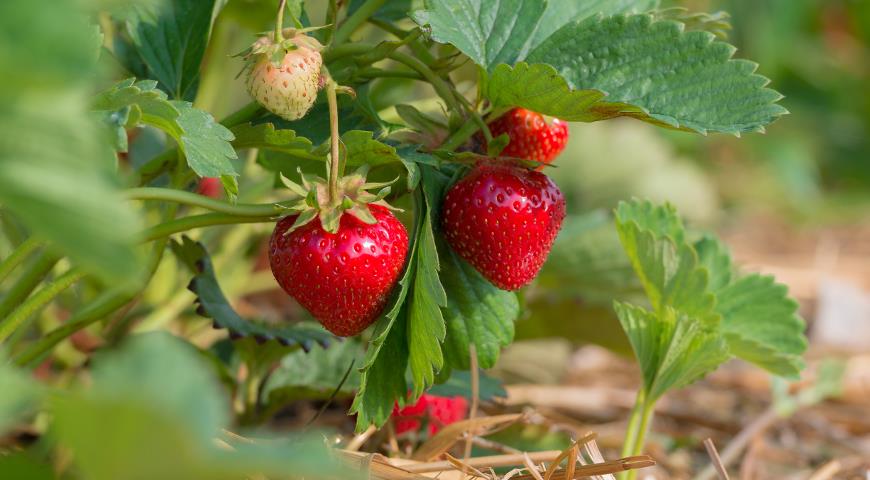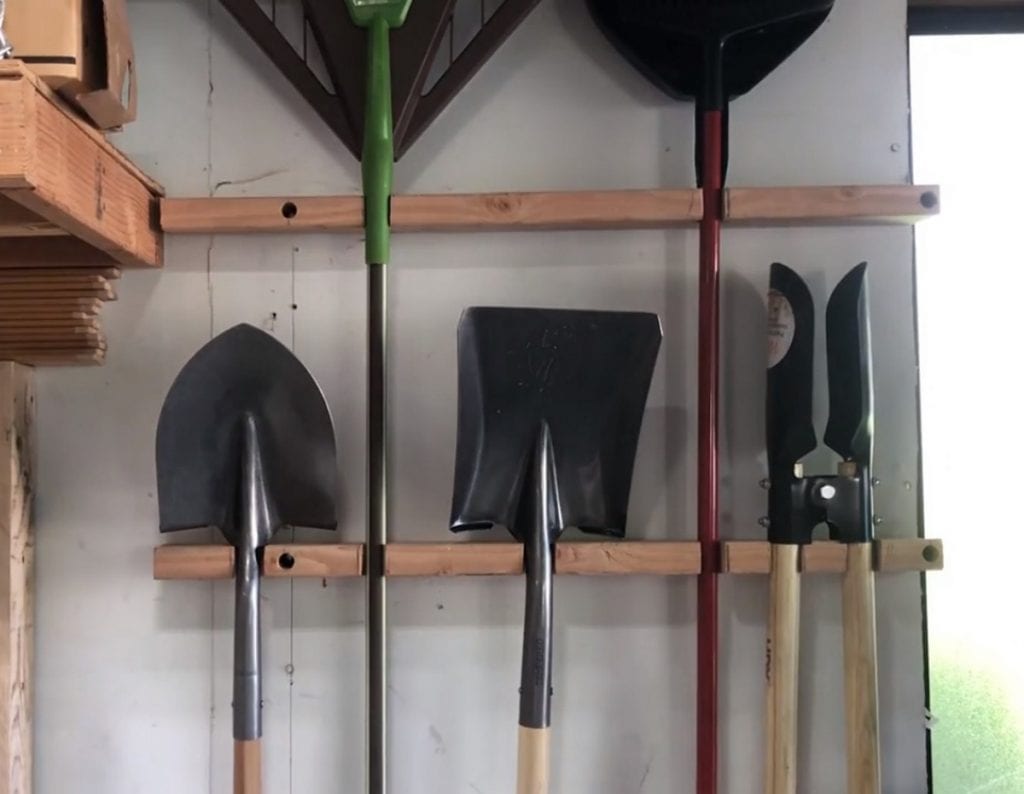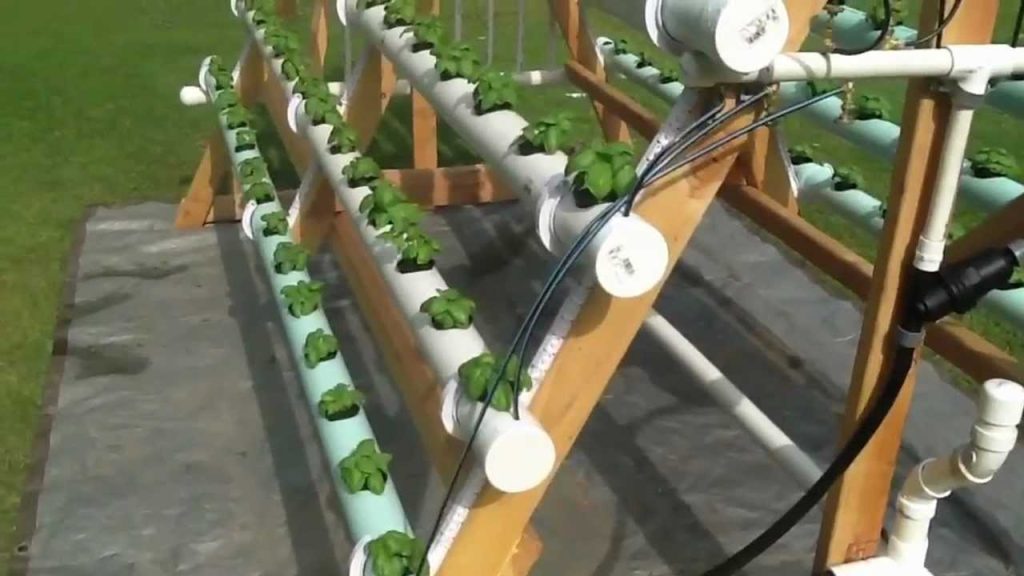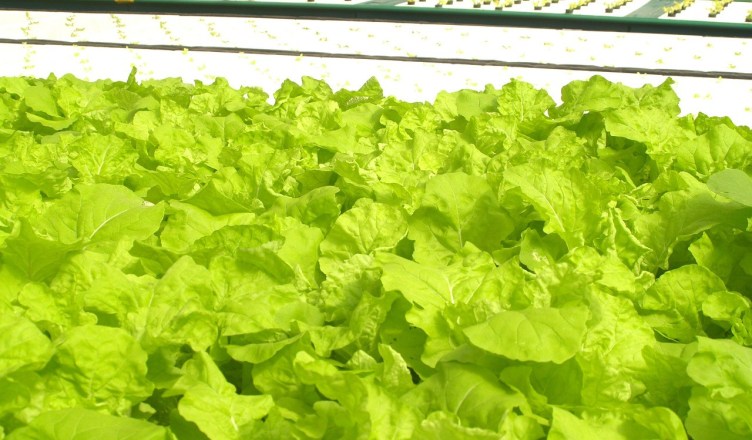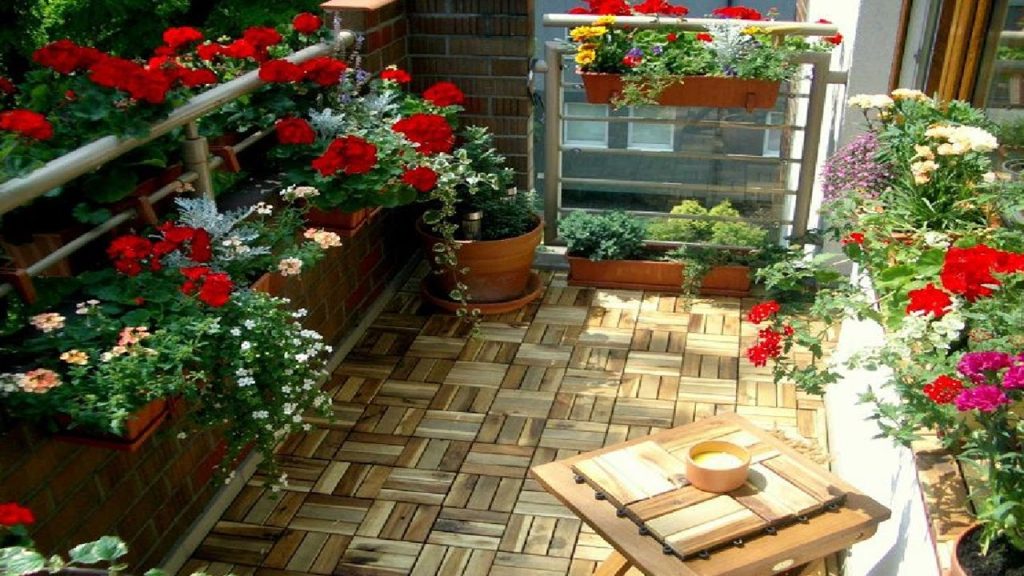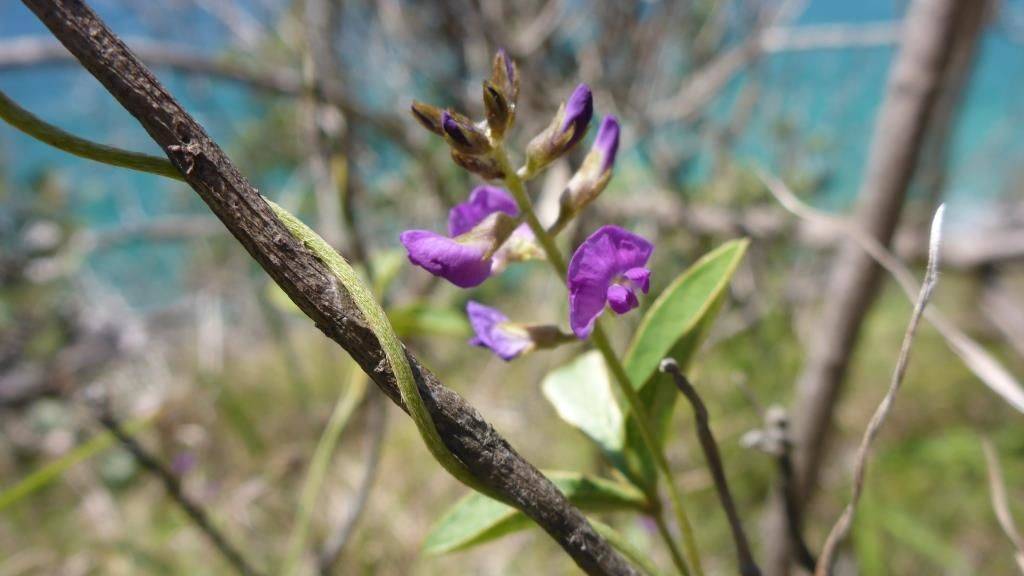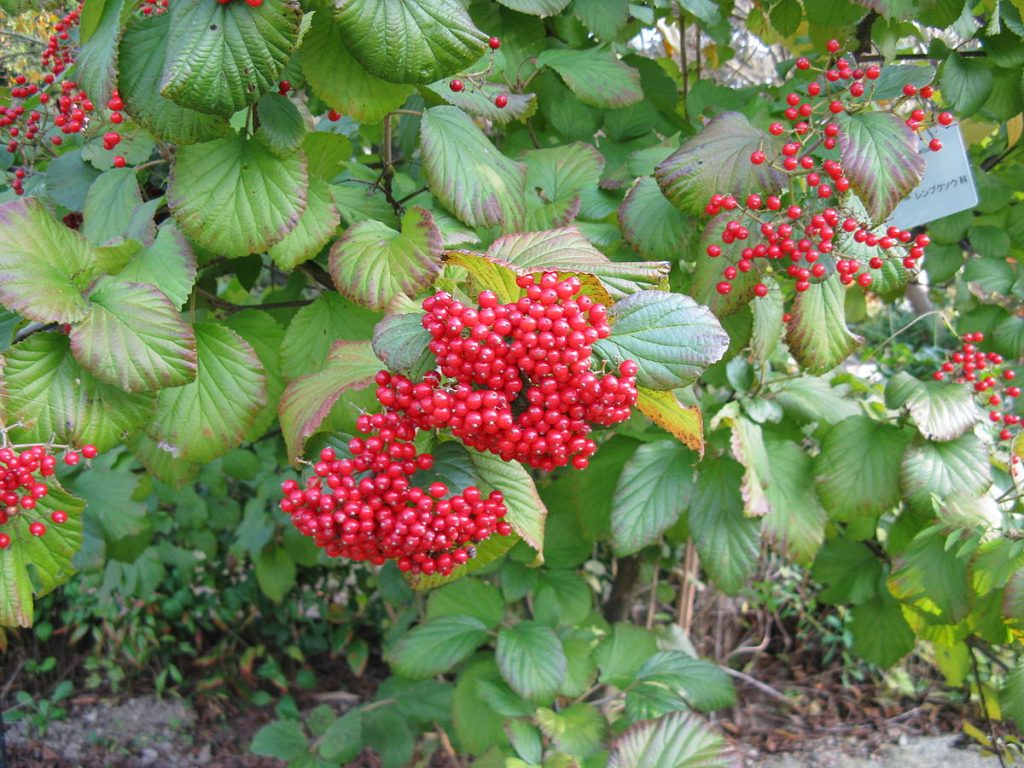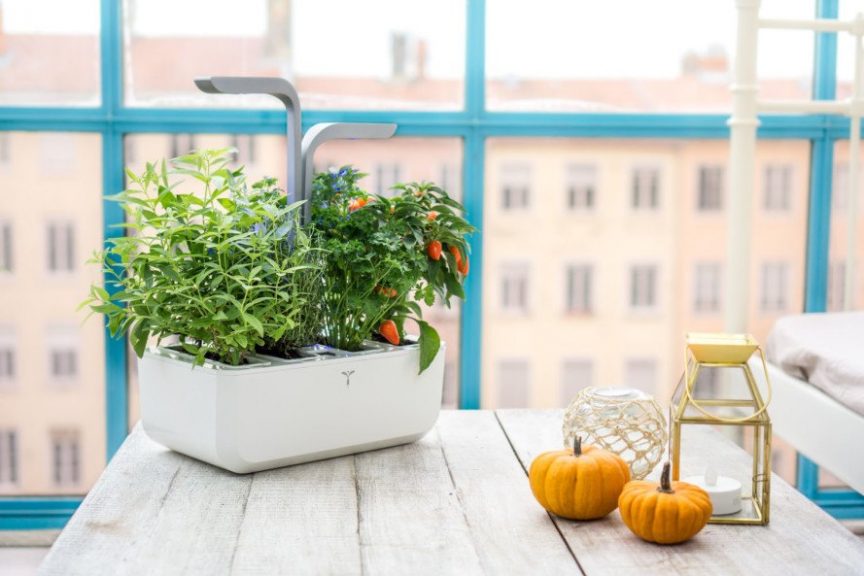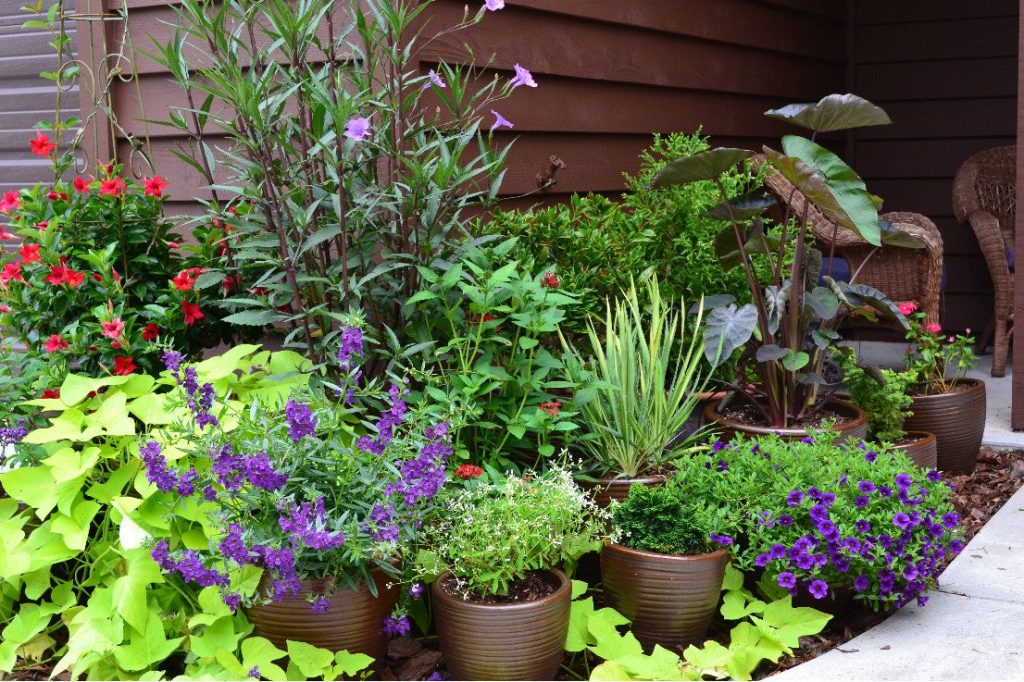Strawberry growing conditions
Garden strawberries need full light throughout the daylight hours. Even a slight sliding shadow (for example, from a nearby tree) significantly reduces the yield and quality of berries. Relatively shade-tolerant only some varieties.
Place for planting and growing strawberries should be flat or with a slight (up to 5 °) slope to the south. It is undesirable to grow strawberries in lowlands, where cold air accumulates in the spring, and flowers often suffer from late frosts. The place must be protected from the wind (so that the snow does not blow away in winter). The root system of strawberries begins to freeze out at a temperature of -10 …- 12 ° C, long frost-free frosts are dangerous for it.
Garden strawberries are not planted on flooded areas, and the groundwater level should be no closer than 0.8 m to the soil surface. If groundwater is higher, with intensive care (frequent watering or drip irrigation, snow retention), strawberries can be cultivated on raised ridges.
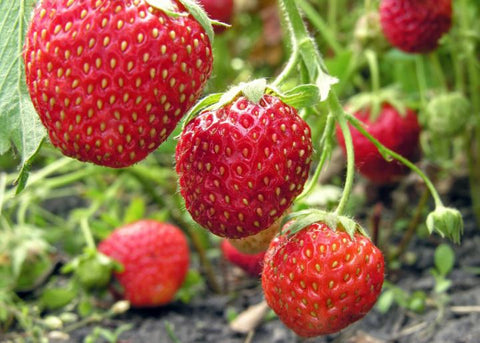
The soil for planting strawberries is preferably sandy, light or medium loamy, with a neutral or slightly acidic reaction (pH 5.5-6.5). Before planting, they dig up the soil on a spade bayonet, introduce peat and hummus (5-8 kg / sq. M), complete mineral fertilizer that does not contain chlorine (40-50 g / sq. M). Particular attention should be paid to cleaning the soil from the roots and rhizomes of weeds: strawberries are usually grown in one place without a transplant for 3-4 years, perennial weeds will make it difficult to weed and care.
Allowable strawberry precursors: beets, lettuce, cicorn salad.
The best predecessors: siderata, peas, beans, beans, onions, garlic, radishes, parsley, dill, carrots, celery, corn.
Bad predecessors: tomatoes, peppers, eggplants, cucumbers, zucchini, potatoes, raspberries, cabbage.
Optimum terms of the landing of strawberry.
The landing time depends on the onset of favorable weather conditions. Each region has its own calendar dates. The approximate dates of planting seedlings with an open root system (ACS) in the spring: from mid-April to late May and in the fall from early August to mid-October.
Seedlings of strawberries grown in containers can be planted throughout the growing season because Since the root system is well developed and occupies the entire volume of the container, the plant is not damaged during transfer (transfer) from the container to the ground.
Seedlings purchased in garden centers and grown at home from seed: the end of spring – the beginning of summer.
Seedlings obtained by rooting daughter outlets: the end of July – the beginning of August
Seedlings purchased in the parcel: September.
Strawberry – superintensive culture. If you plant it in early autumn, then next summer you can already pick berries. But although strawberries live for twenty years, it gives maximum yields for only the first three years. With each new summer, everything will decrease and deteriorate: the number of berries, their taste, and size.
How to care for strawberries
Throughout the year, keep the soil on the plantation loose and free from weeds. Mulching helps to greatly facilitate the cultivation of strawberries.
In dry weather, strawberries are watered all summer at least once a week, until September.
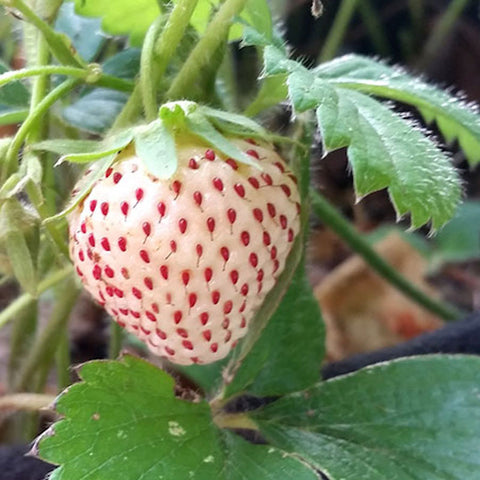
Even the most unpretentious varieties of single fruiting require 3-4 supplements per year. Moreover, the most important dressing – after harvesting strawberries. Repair strawberries need to be fed every 7-10 days until September.
After harvesting, the plantation is cleaned of plant residues and mustaches unused for breeding. It is also recommended to remove old, affected by mottling and mite leaves.
Be sure to try new varieties. If you grow the same varieties from year to year, the pathogens gradually adapt to their immune profile.
The variety, as it were, “cultivates” its “freeloaders” – more or less harmful races of fungi, subtypes of viruses capable of “chopping” its protection. Rotation of varieties allows not only to highlight the most delicious and suitable for your garden but also to reduce the threat of the spread of disease.
How to achieve good results
* Take seedlings from seedlings only from the most productive plants.
The new plantation is usually laid partially purchased plants, partly with their planting material. Preparation of seedlings is better to start at harvest time. At this time, evaluate the bushes and look the best. Do not flatter yourself when you see a berry the size of a chicken egg on a bush: if a handful of “strawberry peas” ripens behind a single large berry on a plant, then the plant’s genetic potential is not high, and you will not achieve any yield from it or its posterity.
* Choose and mark with pegs plants with abundant, healthy, identical in size berries – these bushes are the most promising, it is worth taking planting material from them and only for laying the next plot. When a mustache begins to appear on the plants selected for breeding, with rooting it is better not to delay it – the delay will affect the quality of the planting material. Choose the most powerful outlet of the first order (departing from the parent bush). From the sockets of the second and subsequent orders (departing from the other daughter sockets) we get weaker bushes.
* Plant no later than August. To get the maximum yield, strawberries are best planted in July, in a well-lit area (even the sliding shadow of the tree prevents the plant from blooming and bearing fruit).
* Strawberries are responsive to supplement with boric acid. Signs of a boron deficiency: leaf curvature and edge necrosis. Feed boric acid contribute to the survival of seedlings, significantly increase the yield and improve the taste of berries. In early spring, planting is shed with a solution of boric acid with the addition of potassium permanganate (1 g potassium permanganate, 1 g of boric acid per 10 liters of water), consumption is about 10 liters per 30-40 bushes.
It is useful to conduct foliar feeding with a solution of boric acid (5 g per 10 l of water). When the plants have advanced buds, apply the foliar dressing with a solution (2 g of boric acid, 2 g of manganese, 1 cup of sifted ash per 10 liters of water). Make a hood out of the ashes beforehand: pour a glass of ash with boiling water and insist, stirring occasionally for 24 hours, then filter through gauze – and the infusion is ready.




